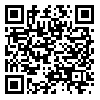BibTeX | RIS | EndNote | Medlars | ProCite | Reference Manager | RefWorks
Send citation to:
URL: http://journal.zums.ac.ir/article-1-1939-fa.html
Background and Objective: Staphylococcus pyogenes and Staphylococcus aureus bacteria are infectious agents of the pulmonary system. S. pyogenes usually appears as a secondary infection along with a primary staphylococcus infection. Hence, antimicrobial effects of Lavandula angustifolia on S. pyogenes and S. aureus were simultaneously examined. Materials and Methods: In this study, compounds existing in essences of leaves and flowers of L. angustifolia (true Lavander) were analyzed by gas chromatography using mass spectrometry (GC/Ms) and the antibacterial effects of the extracts were investigated by tube dilution method in a broth medium. Minimal Inhibition Concentration (MIC) and Minimal Bactericidal Concentration (MBC) were determined using different concentrations of the extracts. Then disk diffusion was performed with MIC concentrations. Results: The most important compounds existing in the essence of L. angustifolia flowers and leaves included linalool (35.2%-36.8%), cineole (17.1%-20.1%), and borneol (7.2%-7.8%), respectively. MIC and MBC of aqua and alcohol extracts of the leaves and flowers on S. aureus were 15 mg and 20 mg, respectively. As for S. pyogenes, the MIC was 20 mg. However, the MBCs of alcohol and of the aqueous extracts were different (20 mg vs. 25 mg). Conclusion: Our results reveal that alcohol extract of L. angustifolia leaves has antibacterial effect on S. aureus and on S. pyogenes and could be considered as an antibacterial product in the treatment of infections caused by these two microorganisms.
دریافت: 1391/7/30 | پذیرش: 1393/3/31 | انتشار: 1393/3/31
| بازنشر اطلاعات | |
 |
این مقاله تحت شرایط Creative Commons Attribution-NonCommercial 4.0 International License قابل بازنشر است. |




